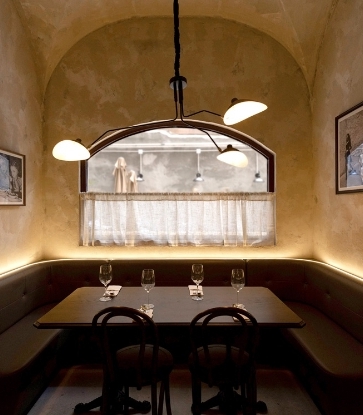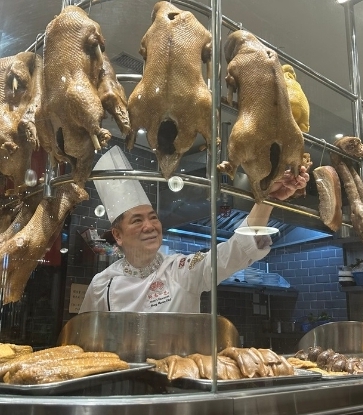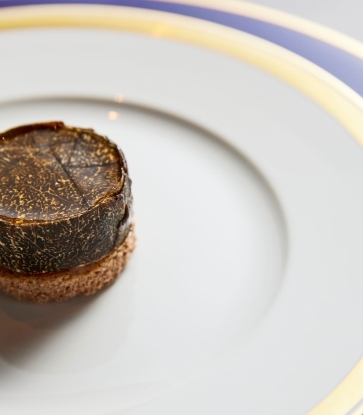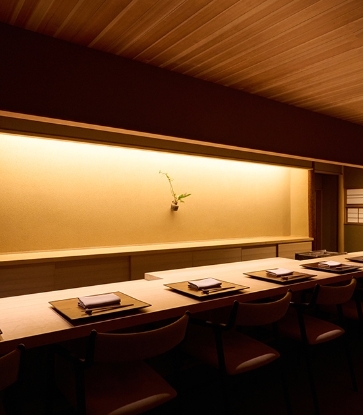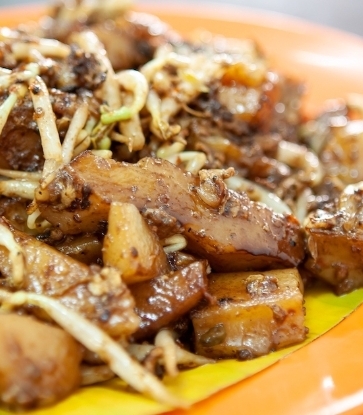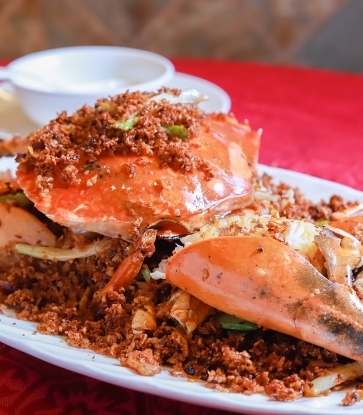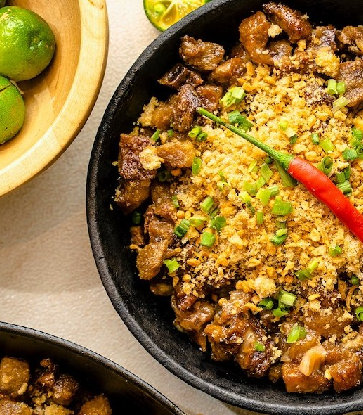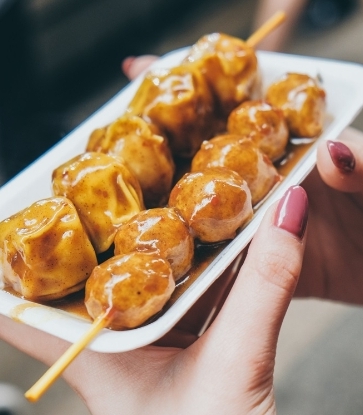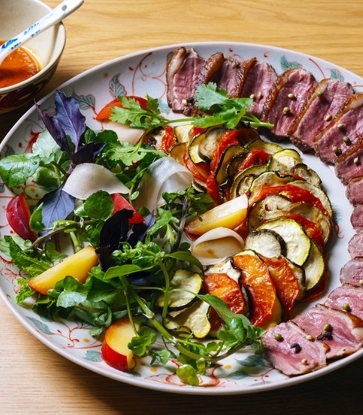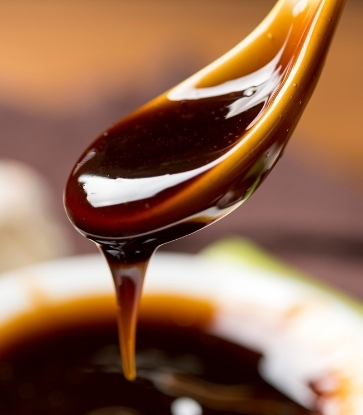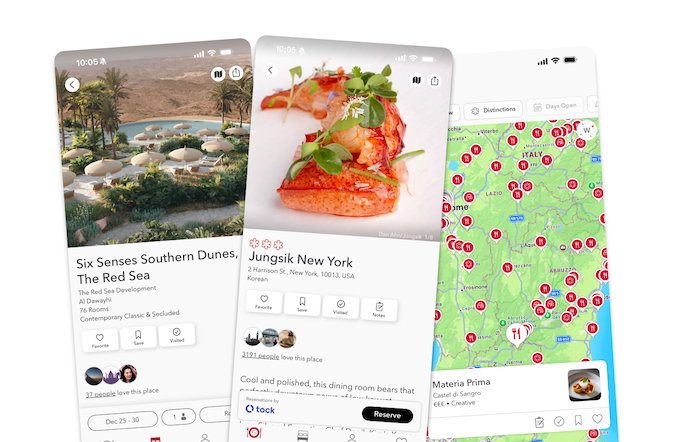As you wander through the bustling commercial and residential area of Sheung Wan, it’s hard to miss Ăn Chơi on the corner of Jervois Street. Its eye-catching bright yellow storefront, unmistakably handwritten signs, colorful plastic chairs and posters will transport you straight to the streets of Saigon.
Earning a MICHELIN recommendation just a year and a half after opening, Ăn Chơi is run by Chef Lewis Dai and his Vietnamese wife, Khanh Ho Kim, Mai, known as Kay. Dai has worked at several Western-style restaurants and spent two years in Vietnam, where he met Kay. Kay’s hometown is Ho Chi Minh City, but with family in Hue City, she often traveled as a child, deepening her understanding of Vietnamese cuisine.
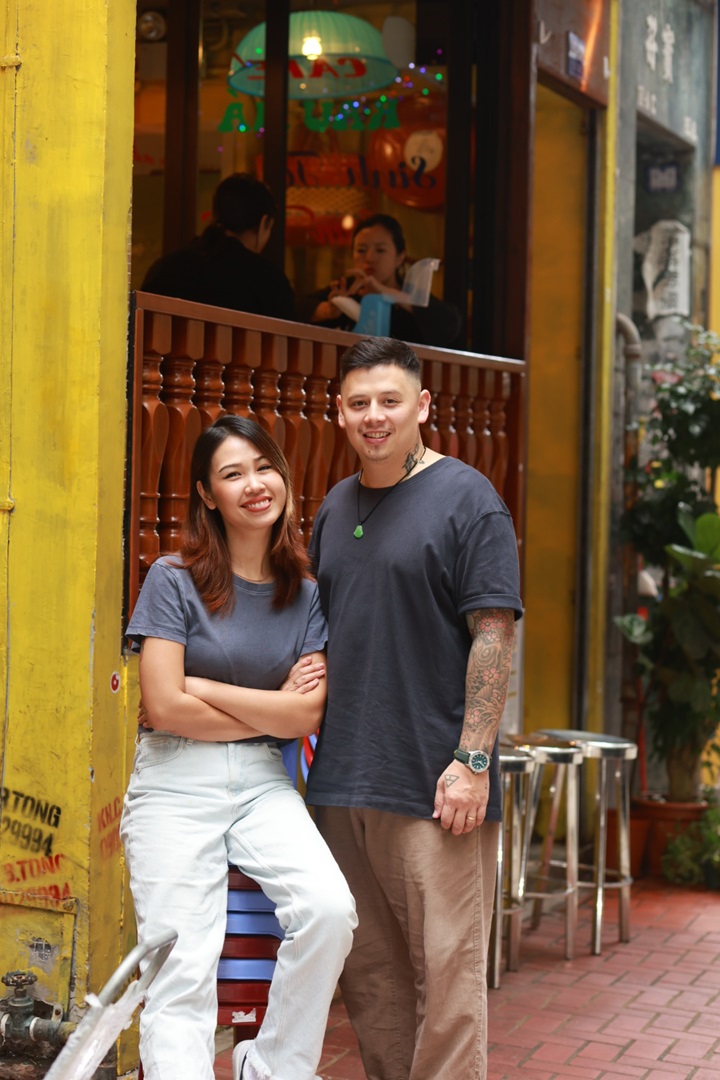
For many Hongkongers, Vietnamese cuisine means banh mi and beef pho. In the early months of opening, business was tough: customers, unfamiliar with the broader menu, often asked for their usual beef pho and left when they learned it wasn’t available. “We have some dishes with very bold flavors, such as pan-fried flounder with fermented shrimp paste. We’re the only restaurant in Hong Kong that offers such a daring dish,” says Kay. (right image: © Gloria Chung)
The menu at Ăn Chơi features many Vietnamese ingredients that are hard to find in Hong Kong, requiring the owners to source them personally.
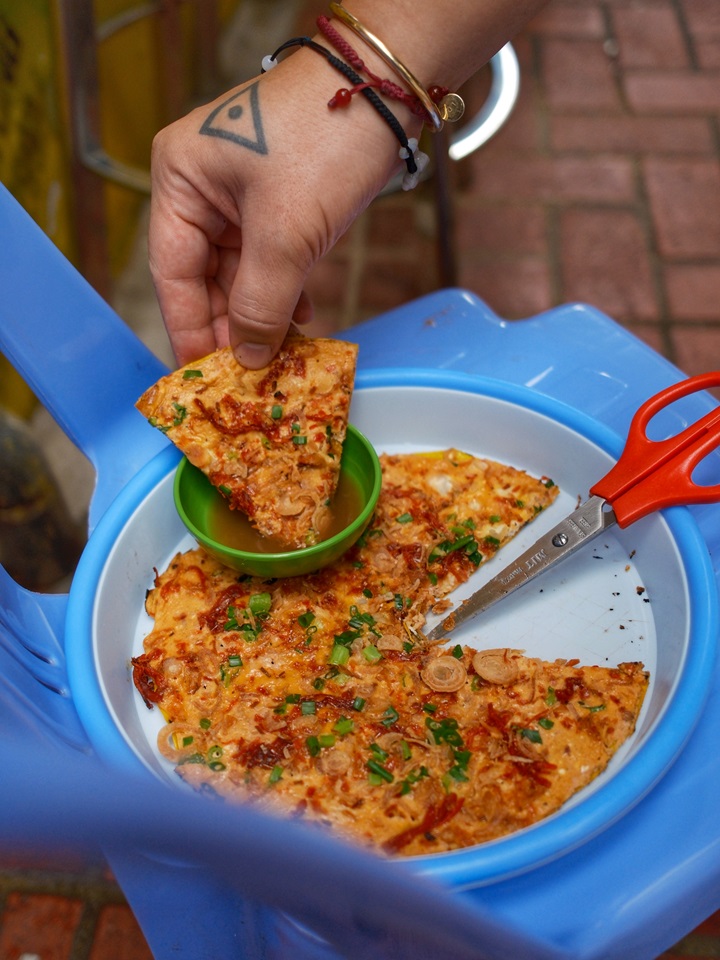
Currently, half of the ingredients used in the restaurant come from Vietnam, such as the yellow rice paper from Da Lat. Located in the highlands, Da Lat is famous for its coffee and a French-influenced dish the couple fondly refer to as Vietnamese pizza. This “pizza” is made by baking thick Vietnamese rice paper, then topping it with Vietnamese liver pâté, cheese, onions and eggs. They love this dish so much that their family in Vietnam now sends the rice paper to Hong Kong every month.
Vietnamese fermented condiments, such as shrimp paste and fermented anchovy sauce (mắm nem), are also hard to find in Hong Kong. Mắm nem is used in a dish featuring minced beef wrapped in betel leaves, called bánh mì bò lá lốt, one of the restaurant’s most popular main courses. The sauce can also be served with rice paper rolls. (left image ©Ăn Chơi)
Further Reading: Hotels with MICHELIN Restaurants in Vietnam
“Typically, rice paper rolls are served with sweet fish sauce, or nuoc cham, but in the South, people eat them with anchovy sauce, peanut sauce and pineapple sauce. We want to bring a new perspective on how this dish can be savored,” Kay explains.
But the hardest-to-find ingredient is coffee. Ăn Chơi partnered with La Viet — a popular Vietnamese brand among younger drinkers — to create a custom blend. By mixing Robusta and Arabica beans, their coffee offers a richer aroma and a lighter body than traditional Vietnamese brews, which typically use pure Robusta.
The restaurant’s daily special noodle soups are particularly popular, with bún bò Huế being a standout. The broth is made from beef bones, shrimp paste, pineapple and lemongrass, then topped with crab cakes, duck’s blood, beef brisket and water spinach. Lewis’ personal favorite — though less frequently ordered — is the crab meat cassava noodle soup (bánh canh cua). It features homemade cassava noodles with a chewy, udon-like texture, in a rich, umami-packed broth made from pork bones and crab roe, finished with crab meat, pork belly slices and fried dough.
RELATED: A Guide to Vietnamese Coffee
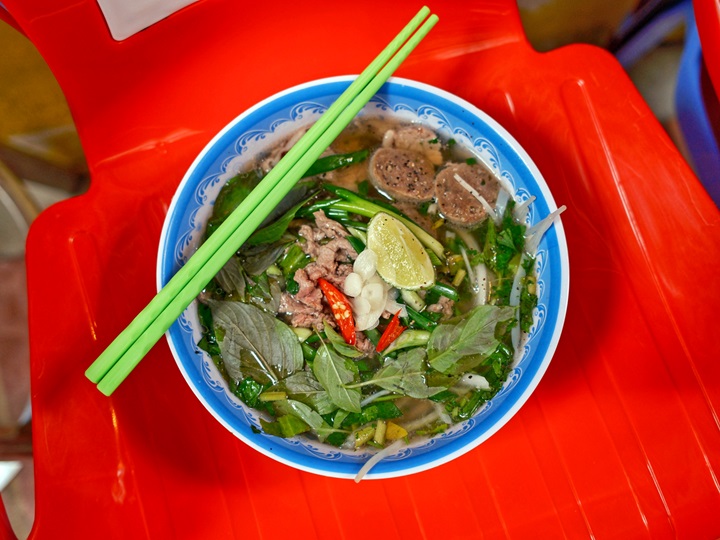
Lewis explains, “Pho bo means rice noodles with beef, and there shouldn’t be too many other additives. Our southern-style pho is topped with fresh beef, brisket and beef balls, along with Thai basil and cilantro. In the North, they use stir-fried beef strips.” Both Lewis and Kay are passionate about Vietnamese noodles and hope that more locals will come to understand that Vietnamese noodle dishes include not only flat rice noodles, but also bun or rice vermicelli, which is already popular in Hong Kong.
RELATED: Dish Spotlight: The Multicultural Origins of Vietnamese Beef Pho
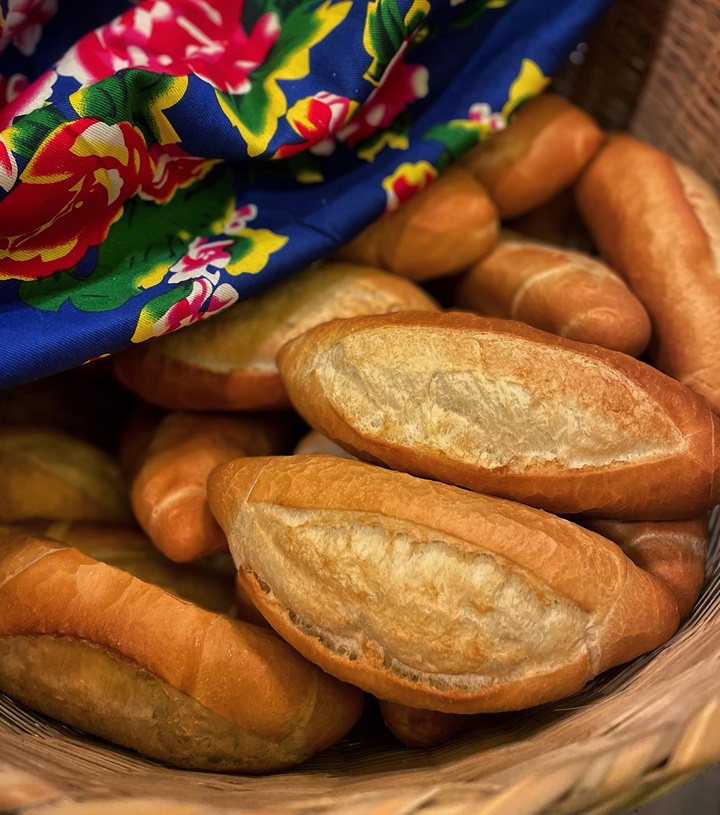
Though the space is small, what sets Ăn Chơi apart is how much is made in-house. For example, their baguettes are made from scratch and baked twice a day. “Banh mi must be made with your own bread. It has to be fresh to get that crispy, airy texture,” Lewis says. The couple even returned to Kay’s hometown to learn from local masters. Their biggest takeaway was creating their own signature sandwich sauce, which, when paired with Vietnamese sausage, completely transforms the dish. (right image ©Ăn Chơi)
Opened at the tail end of the pandemic, the restaurant initially targeted nearby office workers. But the couple soon discovered that Sheung Wan’s diverse community — especially expats — was more familiar with Vietnamese cuisine.
Many were pleasantly surprised to find dishes they’d enjoyed in Vietnam available at Ăn Chơi. The restaurant has since grown a base of loyal local regulars and tourists alike.
Kay recalls opening the MICHELIN app and seeing their restaurant’s name, a moment filled with disbelief and joy. “I felt like all our hard work was worth it,” she says. “We’d been working toward this goal from day one. Lewis couldn’t even sleep the night before the announcement. Since receiving the MICHELIN recommendation, our customer count has doubled. It’s added pressure, but we’ll keep doing our best.”
Hero image: ©Ăn Chơi
Read the original Chinese story here.
Further Reading: A Tale of Two Tarts: The Best Custard Tarts in Hong Kong and Macau



